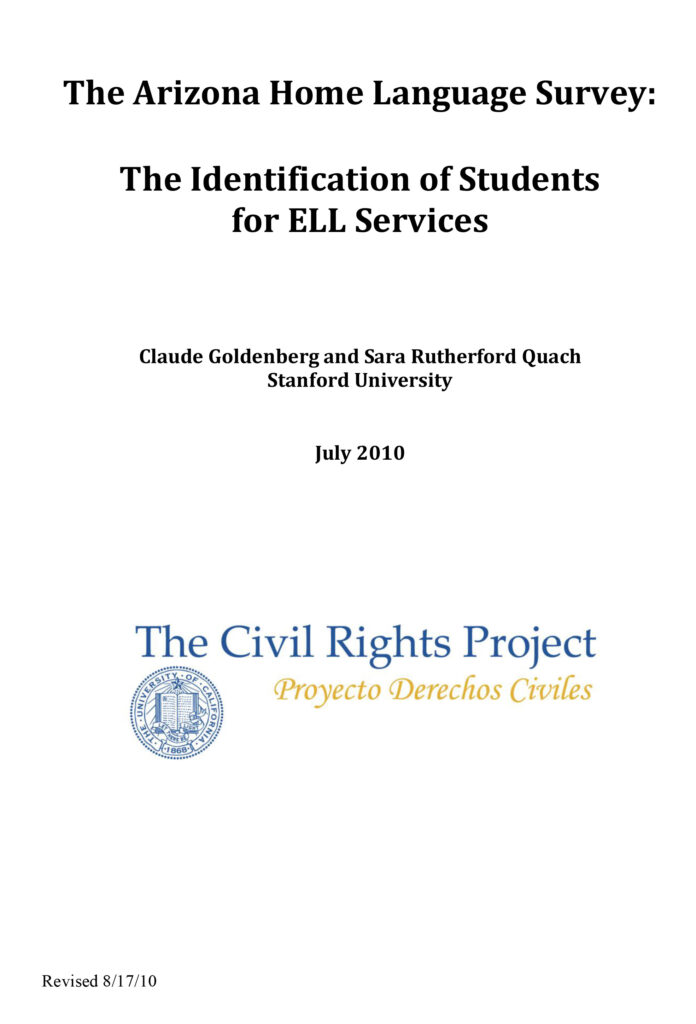This is one of nine papers of the Arizona Educational Equity Project: 21 senior scholars and advanced graduate students from four major research universities joined together, under the aegis of the Civil Rights Project at UCLA, to produce the studies on the condition of English learner students in Arizona.
Abstract:
Assuring that English language learners (ELLs) receive the services to which they have a right requires accurately identifying those students. Virtually all states identify ELLs in a two-step process: First, parents fill out a home language survey; second, students in whose homes a language other than English is spoken and who therefore might be less than fully proficient in English, are tested for English language proficiency. The home language survey thus plays a gatekeeping role. If it fails to identify potential ELLs, there is a greatly reduced chance these students will be identified and receive services to which they are entitled. The two studies reported in this paper are not about what services ELLs need or receive but only about the process whereby potential ELLs are identified so that they might be tested then receive services if they qualify. More specifically, it addresses the question of whether Arizona’s sharp reduction in the home language survey questions can lead to failure to identify students who, by the state’s own criterion (i.e., performance on the AZELLA), are entitled to those services. Analyses of data from two Arizona school districts clearly show that use of a single home language survey question will under-identify students. Based on data from these two districts, as many as 11 to 18% of students who are eligible for ELL designation could be denied services to which they are entitled if a single home language survey question is used to identify potential ELLs. Further, it is highly unlikely that a fail safe mechanism established by the state, whereby teachers can nominate potential ELLs for language testing, will in fact successfully identify most students the new procedure fails to identify.
For more information on the series, view the Arizona Educational Equity Project Overview.
The Arizona Educational Equity Project grew from the class action lawsuit of Horne v. Flores, which was initially brought against the state of Arizona in 1992 on behalf of English language learners (ELLs) there. The case reached the U.S. Supreme Court, which issued a ruling on June 25, 2009, establishing new legal standards for the EEOA but also returning the case to the Federal District Court in Arizona, to examine Arizona’s instructional policies for ELLs. The issues argued in the Arizona court had important implications for the educational rights of the tenth of U.S. students classified as ELL and for the federal law that protects them. The challenge to the research community was to provide the best possible information on how ELL students were faring under current Arizona educational policies. The Civil Rights Project spearheaded the Arizona Educational Equity Project to generate the most up-to-date research on the equality of educational opportunity for English learners.
In compliance with the UC Open Access Policy, this report has been made available on eScholarship:










